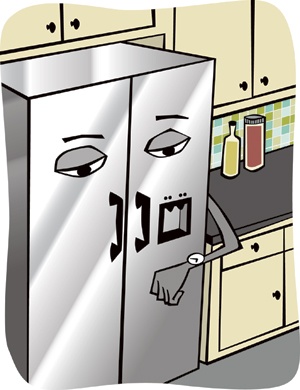Cooperatives across the country are already ahead of other electric utilities in automated meter reading, which speeds accurate outage information and electricity usage data to cooperative headquarters. But there’s more innovation on the way, such as in-home electricity usage displays and demand-response thermostats. Utilities that invest in these and other future technologies will have bidirectional communication with the customer, leading to a new level of efficiency.
Advanced electric meters and integrated software systems will be able to communicate with the grid, the customer and the customer’s appliances in the blink of an eye.
Alas, “smart” software and equipment require significant investments that cannot be recouped in the short term. Each cooperative will have to decide how “smart” it can afford to get.
The way we are now
Peak-time electricity costs the cooperative more than electricity generated during lower demand periods. It’s not unusual for the cost of power to spike precipitously on particularly hot or cold days, say from 4 to 8 p.m. Extra generating plants, frequently the least efficient, may have to be put into service for short periods. Consumers never see the daily fluctuations in electricity costs. They generally pay a flat rate that covers a utility’s total cost of production and transmission.
In the future, many co-ops will charge more for electricity used during peak hours
The dumb house: As the window opens on the potentially highest electricity use of the day, the family streams home, cranks up the air conditioning, drains the water heater and repeatedly opens and closes the refrigerator door. The range is turned on, and so are two computers and a 50-inch high-definition TV. The digital readout on the electric meter is ticking upward with wild abandon. So is the electricity bill.
The smart house: Electronic systems are busily exchanging information. The “smart” grid, which is in constant communication with your electricity generator, can accurately predict if the system is approaching peak capacity. The grid informs your distribution co-op about unusually high energy usage.
By prior arrangement, your co-op has provided you with a programmable thermostat with the understanding that the co-op can take control of the system and cycle it on and off for short periods on very hot or cold days. (Three percent of a cooling bill can be saved for every 1 degree increase in the thermostat.) This reduces the number of kilowatt-hours (kWh) your distribution co-op has to buy from a generator and the kWh you have to pay for. The cycling is of short duration, it does not inconvenience you and the combined limitations could well save your co-op from paying for an expensive new power plant or putting an old polluting one into short-term service.
In the smart house, Ralph the refrigerator has been programmed to know that electricity will be cheaper after 8 p.m., so he delays his defrost mode and raises his freezer temperature by a couple of degrees for a couple of hours. Chloe the clothes washer and Dave the dryer are also postponing their appointed chores until lower rates kick in—unless, of course, you override the “high-tariff” warnings they blink on their electronic readouts. With such allies as Ralph, Chloe and Dave, you and your co-op will be able to reduce electricity use during the peak hours.
Co-ops are pretty smart already
The industry still doesn’t have a common definition of “smart,” so it’s a good idea to use more precise definitions. Nationwide, electric cooperatives have taken a strong lead in the adoption of advanced metering infrastructure, according to the Federal Energy Regulatory Commission (FERC). More than 16 percent of co-ops use advanced metering compared with 2.7 percent of investor-owned utilities.
The FERC defines “advanced metering” as a system that records customer consumption on at least an hourly basis and provides at least a daily transmittal of measurements over a communications network to a central collection point. But that’s just the first step in intelligent metering. “Smart” appliances aren’t on the market yet, and very few homes are wired for the latest technology.
“Energy efficiency remains key to how electric co-ops will keep electricity affordable in the face of rising energy prices,” concludes Mike Williams, president/CEO of Texas Electric Cooperatives. “Co-ops are putting their expertise to work in developing innovative programs that will help their members get the most out of every kilowatt.”
——————–
Kaye Northcott is retired editor of Texas Co-op Power.


